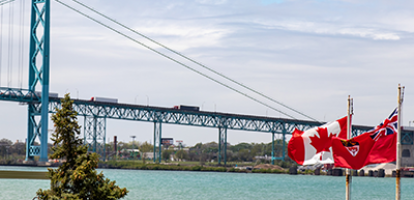To: The City of Calgary and the Province of Alberta
From: William B.P. Robson
Date: November 18, 2019
Re: The Answer to Calgary’s Budgeting Woes is … Better Budgeting!
The dispute between the City of Calgary and the Province of Alberta over the city’s budget and provincial transfers needs a few facts. One, in particular, would help: the city’s actual bottom line. It seems nobody knows.
Here’s a hint: Calgary ran a surplus in 2018. How big? Here’s another hint: its total expenses that year were $3.9 billion.
So how big was 2018’s surplus? You probably guessed something like $1 million, $10 million, or $100 million. Like everyone else, you know how heated and anxious the debate over the city budget gets this time of year. Threats on all sides: cuts to social services and policing; hikes to taxes and fees; delays in maintaining and building key infrastructure. If Calgary’s bottom line isn’t in the red, it must be barely in the black.
Yet the actual number for 2018 – the excess of revenue over expenses – was more than $1 billion. Seriously. Calgary collected more than $4.9 billion in revenue, which covered less than $3.9 billion in expenses, leaving a surplus upward of $1 billion.
An amazing number – and not just compared to what the annual budget debate and the quarrel with the province would suggest. Calgary’s surplus was more than one-quarter of its expenses. That’s like Alberta, with $56.3 billion in expenses in its latest (2018/19) fiscal year, showing a $15.1-billion surplus, instead of its actual $6.7-billion deficit. Or the federal government, with $356 billion in expenses in 2018/19, showing a $93-billion surplus, instead of its actual $14 billion deficit.
With Canada’s provincial and federal governments in rough fiscal shape, we would applaud their achieving surpluses like that. But they would be no surprise. Their budgets at the beginning of the year would prefigure the good news, and the budget debates would feature potential program increases and tax cuts. Calgary’s surplus is different – as though it happened by accident.
Check further back, though, and Calgary’s huge surplus looks less accidental. It happened the year before, in 2017. Also in 2016, and 2015, and 2014. In each of those years, revenues exceeded expenses by more than $1 billion. Relative to expenses, Calgary’s surplus in 2018 is unremarkable. Calgary collected 27 percent more revenue than it needed to cover its expenses in 2017 – the same margin as in 2018. In 2016, it collected 35 percent more revenue. In 2015, 31 percent more. And in 2014, 33 percent more.
Look across Alberta – indeed, across Canada – and Calgary fits a pattern. Municipal governments typically show surpluses, typically double-digit percentages of their expenses. While Calgary’s surpluses look extra surprising, with the city’s economy in such rough shape since 2015, elsewhere in Canada also, hardly anyone knows about their cities’ robust bottom lines.
The reasons for these surprise surpluses are similar just about everywhere. Calgary, like most Canadian cities, presents budgets that do not match its financial statements. A key difference is that the city budget does not record capital investments as assets and amortize them as they deliver their services. That would be sensible: that is how they appear in the city’s year-end financial statements. It is also how they appear in provincial budgets and financial statements. Instead, Calgary’s budget shows them as cash outlays. That makes them look hard to afford, with two results.
One result is that the city builds less infrastructure, and more slowly, than it could. Another is that it collects too much revenue up-front – such as development charges that raise the price of new homes, and transfers from the province – for the infrastructure it does build.
So while Calgary has a healthy balance sheet – positive net worth of $19.7 billion at the end of 2018 – the accidental nature of the surpluses that built that tally creates problems. The city holds an astonishing $7.3 billion of financial assets – money that could have been invested in public infrastructure, or not taxed at all.
More attention to these facts would promote a better discussion between the city and the province. Calgary’s main need is a better budgeting process. Alberta can help with that: as elsewhere in Canada, archaic provincial rules promote cash budgeting for capital, and foster these surprise surpluses.
Yes, Calgary would like more money, but Alberta has financial pressures of its own. Better city budgets would help both governments get where they need to go.
William B.P. Robson is President and CEO of the C.D. Howe Institute.
To send a comment or leave feedback, email us at blog@cdhowe.org.
The views expressed here are those of the author. The C.D. Howe Institute does not take corporate positions on policy matters.





